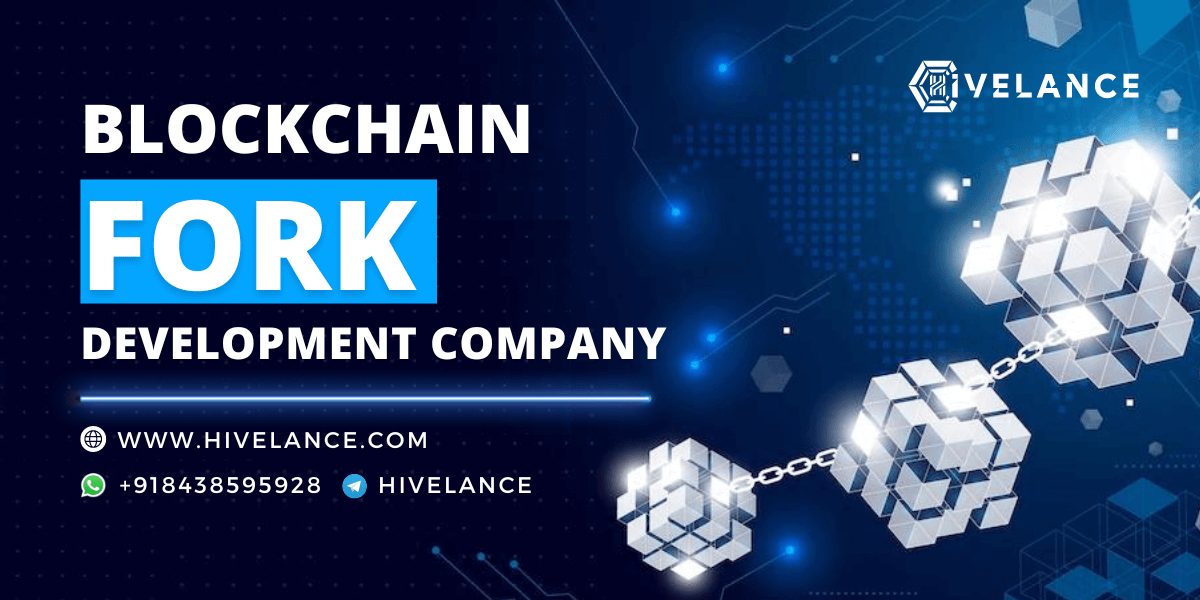Elevate, Enhance, Evolve: The Power of Blockchain Forking
Posted 2023-08-10 07:21:32
0
2K

Showcase Of Blockchain Fork Development :
Blockchain technology has witnessed rapid evolution since the inception of Bitcoin in 2009. One of the most significant phenomena in the blockchain space is the concept of forks. A fork occurs when a blockchain's protocol or codebase is modified, resulting in two separate chains diverging from a common origin. This article delves into the world of blockchain forks, exploring their types, motivations, and the intricate development process behind them.
Types of Forks:
Blockchain forks can be broadly classified into two categories: soft forks and hard forks.
Soft Forks:
A soft fork is a backward-compatible upgrade to a blockchain's protocol. In this type of fork, new rules are introduced that are more restrictive than the existing ones. Nodes that haven't upgraded to the new rules can still participate in the network but will adhere to the updated rules. This ensures continuity and a unified blockchain history. Examples of soft forks include the introduction of Segregated Witness (SegWit) on the Bitcoin network.
Hard Forks:
A hard fork, on the other hand, is a substantial and non-compatible upgrade to the blockchain protocol. New rules are introduced that are not backward-compatible, resulting in a divergence of the blockchain into two separate chains. Participants must upgrade their software to continue interacting with the new chain.
Motivations for Forks:
Forks are often driven by a range of motivations
Scalability: To enhance the network's capacity to process more transactions per second, forks might introduce changes that optimize the consensus algorithm or the block size.
Security Upgrades: Forks can be initiated to fix vulnerabilities, enhance security measures, or improve the resistance against potential attacks.
Governance Disputes: Differences in the blockchain governance model, such as decision making processes, can lead to forks when the community disagrees on the direction the protocol should take.
Feature Additions: New features and functionalities might be proposed that are incompatible with the current protocol, necessitating a fork to accommodate these changes.
Development Process:
The development of a blockchain fork is a meticulous process involving several stages:
Proposal: The need for a fork is identified, and a detailed proposal outlining the changes and rationale is drafted.
Community Consensus: Fork proposals are discussed within the community, involving developers, miners, node operators, and users. Consensus is crucial to prevent network fragmentation.
Code Implementation: Developers write and test the updated code based on the proposed changes. Rigorous testing is vital to identify bugs and vulnerabilities before deployment.
Testnet Activation: The new code is deployed on a test network where developers can simulate real world conditions to ensure the changes work as intended.
Mainnet Activation: Once testing is successful and consensus is reached, the new code is activated on the main network at a predetermined block height.
Migration: Participant, including miners and node operators, upgrade to the new software to remain compatible with the forked chain.
Wrap - up :
Blockchain fork are a fundamental aspect of the evolving blockchain landscape, representing significant upgrades, changes, and adaptations to the underlying technology. Soft fork maintain continuity, while hard fork offer opportunities for innovation and resolution of contentious issues. The development process of a fork is complex, requiring collaboration, consensus, and rigorous testing to ensure the stability and security of the resulting chain. As the blockchain ecosystem continues to mature, forks will likely remain a key mechanism for shaping its trajectory.
On all our products and services, we offer exclusive Independence Day deals of up to 30% off. Offer Valid Till 16.08.2023. Contact us.
Talk to Experts for More Info
Call/whatsapp – +91 8438595928
Skype- live:.cid.8e890e9d0810f62c
Telegram – https://t.me/HiveLance
Sponsored
📢 System Update: Sharkbow Marketplace is Now Open!
We are excited to announce the **launch of the Sharkbow Marketplace!** 🎉 Now you can:
- 🛍️ List and sell your products – Open your own store easily.
- 📦 Manage orders effortlessly – Track sales and communicate with buyers.
- 🚀 Reach thousands of buyers – Expand your business with ease.
Start selling today and grow your online business on Sharkbow! 🛒
Open Your Store 🚀 ✖Search
Sponsored
🚀 What Can You Do on Sharkbow?
Sharkbow.com gives you endless possibilities! Explore these powerful features and start creating today:
- 📝 Create Posts – Share your thoughts with the world.
- 🎬 Create Reels – Short videos that capture big moments.
- 📺 Create Watch Videos – Upload long-form content for your audience.
- 📝 Write Blogs – Share stories, insights, and experiences.
- 🛍️ Sell Products – Launch and manage your online store.
- 📣 Create Pages – Build your brand, business, or project.
- 🎉 Create Events – Plan and promote your upcoming events.
- 👥 Create Groups – Connect and build communities.
- ⏳ Create Stories – Share 24-hour disappearing updates.
Join Sharkbow today and make the most out of these features! 🚀
Start Creating Now 🚀Categories
- Art
- Causes
- Crafts
- Dance
- Drinks
- Film
- Fitness
- Food
- Games
- Gardening
- Health
- Home
- Literature
- Music
- Networking
- Other
- Party
- Religion
- Shopping
- Sports
- Theater
- Wellness
Read More
Cos’è un pulitore laser e come può trasformare la pulizia dei materiali?
La tecnologia del pulitore laser sta guadagnando sempre più attenzione in vari settori...
Auto glass repair service
If you are searching for the most reliable Auto Glass Repair Service in Dallas, then check out at...
High Quality Wireless Video Transmitter in India
If you are searching for the best high-quality wireless video transmitter in India? Skywire...
Limitations of the Online Video Platforms Market Report 2032
The market revenue growth is largely fueled by rising consumer acceptance of...
Coffee Machines Market Report Explosive Factors of Revenue by Industry Statistics, Size by 2030
Coffee Machines Market Overview:
The coffee machines market is expected to grow at a 6.57...
